
An Introductory for Western Beginners

Cosmic Psycho (Cocktail Soft, 1991)
The PC-9801 requires little introduction—NEC's 16-bit counterpart, and inevitable successor to the wildly popular PC-8800 series, remains a beloved computing classic within domestic Japan, best known for its unique game library, dithered, 16 color high resolution graphics, and distinct FM soundtracks, courtesy the Yamaha OPN and OPNA sound chips.While interest in the PC-98 outside of its native country has risen over the past several years, and emulation has become more accessible, hardware guides in English continue to remain scarce, and often outdated, or incomplete. This website hopes to remedy that problem, one page at a time.
Having never been released outside of Japan, the PC-98 remains somewhat of a mystery to most retro computing and gaming enthusiasts, despite contemporaries such as the MSX, Sharp X68000, and FM Towns being fairly well documented, and even adored within their respective niches. This has led to a number of common misunderstandings and oft-repeated questions:
"The PC-98 is only for adult/pornographic games."
While the PC-98 does have a decent amount of 18+ software for it, this is no different from any other Japanese computer of the time, each having their respective equal share.It also simply isn't true; the most touted figure is a rough estimate that 40% of the library consists of adult-oriented games, leaving a sizable majority of titles without explicit sexual content, many by fan favorite studios--
Artdink: A-Train, Lunatic Dawn
C-Lab: Rusty
Compile: Puyo Puyo, Madou Monogatari
Enix: 46 Okunen Monogatari
Falcom: Xanadu, Brandish, Popful Mail, Ys, Sorcerian
Gainax: Princess Maker
Kogado Studio: Power Dolls
Wolf Team: Arcus, Tokyo Twilight Busters

Power Dolls 2 Dash (Kogado Studio, 1995)
Numerous tie-ins with a number of anime and manga franchises of the 80s and 90s also exist, including, but not limited to: Bubblegum Crisis, Record of Lodoss War, Macross, Urusei Yatsura, Gundam, Slayers, 3x3 Eyes, Tenchi Muyo!, Maison Ikkoku, Ah! My Goddess!, Kimagure Orange Road, Nadia, and Wedding Peach.
"It runs MS-DOS and Windows, so it's IBM compatible, right?"
Wrong. Beyond its choices of OS (albeit customized by NEC) and usage of Intel x86 processors, the similarities end there. Graphics, sound, the expansion card interface, most storage options, and BIOS are proprietary to the PC-98, and PC-98 only. Do not expect to play your typical DOS favorites unless a port exists.
"I need a 486!"
Some games do perform best on moderately clocked 486 at the least, this much is true. Most commonly--
Touhou 1-5
Anything developed by Giga (Steam-Heart's, Briganty, Variable Geo, Variable Geo II)
Guardian Recall
Flame Zapper Kotsujin
These and other titles, however, make up the minority of the library. Even into the mid 90s, most PC-98 games were designed with the NEC v30 (an improved 8086 compatible CPU) and Intel 286 first and foremost, targeting the most commonly owned machines in an era where upgrades remained an expensive proposition, on a machine that saw no real significant (or rather commonly supported) upgrades after 1986 to its inevitably limited graphical capabilities, held back by a miniscule 256k of VRAM, and no hardware scrolling*.This in turn explains the above examples need for higher requirements—brute forcing around the barriers with raw processing power to compensate for bottlenecks elsewhere, and why action-oriented games remain fewer on the 98 in comparison to RPGs, strategy, ADV/VN, and other less demanding genres.
* A more technical explanation and timeline of the PC-98's graphics systems can be found here
"Can it run DOOM?"
Obnoxious, played out memes aside: yes, it can, assuming you have a properly specced 9821... not that you'd really want to, all things considered.
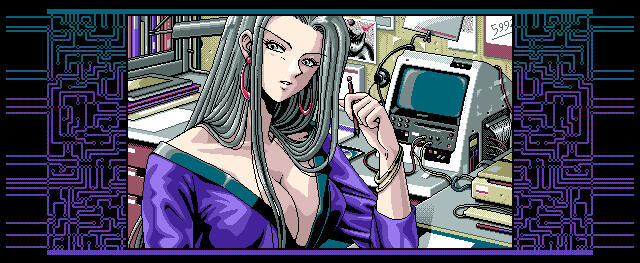
Phobos (Himeya Soft, 1992)
With over 100 desktop models released by NEC from its 1981 introduction to discontinuation in 2000, alongside nearly 50 by clone manufacturer Epson, and several dozen notebook variations between the two, narrowing down the right machine for one's collection is, at the very least, intimidating... but it can also be streamlined, starting with the most important question of all:What games do I want to play on my PC-98?For instance, a Touhou fan would be best served with an early, 486DX equipped 9821 for minimal slowdown. Connoisseurs of RPGs, strategy, graphic adventures, and visual novels comparatively need little more than one of the many 286 machines released throughout the mid-late 80s; simply add a sound card.No single model can play every game available. Some collectors recommend two PC-98s to span the entire library, but space and shipping cost serve as major drawbacks. Others (myself) prefer to cast as wide of a net as possible with the most versatile machine possible, though this, too, comes with its own compromises, often at the expense of the odd demanding game. Both of these approaches are equally valid; there is no right or wrong, only what works best for you.There are three things to keep in mind universal to every PC-98, however:ONLY SOME MODELS HAVE BUILT-IN FM SOUND. For those without, you WILL need a sound card for the full experience.If you plan on using floppy disks, DUAL FLOPPY DRIVES are a must. Nearly all PC-98 games with more than one disk require at least two in the machine at all times, with the exclusion of HDD install only titles (i.e. YU-NO).Also, the CMOS battery MUST BE REMOVED or REPLACED if not already done so by a previous owner. Not unlike PC compatibles, Macintoshes, and Amigas from the same time period, these aging battery cells (intended for storing date, time, and basic configuration in event of power loss) are prone to corrosive leakage and explosion, frequently to devastating, board level consequences.
9801 vs. 9821
PC-98 models can be roughly devided into two major revisions: the original 9801 machines, with variations available up until 1995, and the 9821, initially released in 1992.The major difference is the inclusion of a new graphics mode: 640x480 at 256 colors, versus the 9801's 640x400 at 16 colors. Very few games make use of this new configuration, and even fewer require it outright.Where the 9821 truly appeals, is in two factors:
Starting with the A-mate series—the introduction of IDE for their hard drive interface, allowing cheap and plentiful CF card to IDE converters as a modern, inexpensive, easy to use replacement.
With the exclusion of the very first 9821 (which ran a 386SX), every other model in the line uses some form of 486 or Pentium out of the box.
The former is not entirely exclusive, with the 98Fellows (BA, BX, BS) making use of IDE. They are, however, the minority, with every other 9801 using either internal SASI with a proprietary card slot (extremely limited in capacity), or external hard disks and MO drives via SCSI, connected through an optional SCSI C-Bus card.Solid state replacements for SCSI are equally accessible, as well; BlueSCSI and other similar options (RaSCSI, ArdSCSino) feature excellent compatibility with nearly any PC-98 SCSI card.The latter is also not an exclusive feature, though once again uncommon, at least without acquiring an upgrade via a CPU accelerator, of course varying in rarity; 9801 models featuring some variation of the Intel 486 out of the box are limited to the aforementioned 98Fellows and the FA.But don't be fooled; 9801s shine in their own ways.Where as a number of desirable 9821s suffer from the early 90s capacitor plague*,9801s from the late 80s are among the most reliable machines available, over-engineered to a lost standard, and very rarely requiring any intensive service.Their software compatibility also reigns supreme, particularly those that have both a switchable v30 for legacy support, and a faster 286 or 386 as their primary processor (VX, ES, EX, RX, RA). Not unlike other computers, earlier PC-98 games can be extremely sensitive to CPU speed, either running too fast on newer processors, or suffering other major incompatibilities (one example off the top of my head being Alice Soft's Dream Program System, which with the 486 accelerator in my 9801RX, crashes after the title screen.)To say the least: no matter what you decide on, compromise is inevitable. Please keep this in mind!
* Early surface mount capacitors (SMDs) are extremely prone to failure, leaking corrosive electrolyte over the board. It affects many electronics from this era i.e. numerous Macintosh models, as well as consoles like the Sega CD/Mega CD, Sega Game Gear, and PC Engine Duo.
Recommendations
This is by no means an exhaustive list. For a full database of every model released by both NEC and Epson, and their respective specs + features, please visit With98.Several of the notes and suggestions below provided by shoutmon, krugman, and i509VCB.
Most Versatile
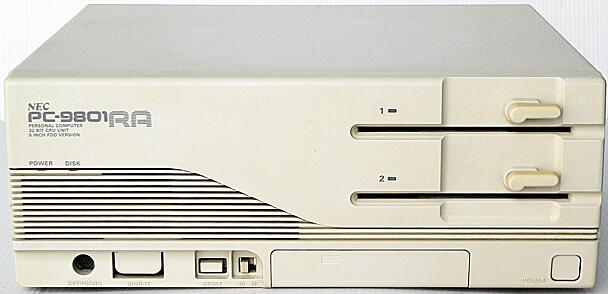
9801RA
Alternatives: 9801ES (similarly specced, but with 3.5" drives)A workhorse if there ever was one, frequently recommended in Japanese circles for good reason. This late 80s tank not only features a 32-bit 386DX for more demanding scenarios (within reason), but also a 16-bit v30 for legacy support, easily switched from the dipswitch blocks behind the front-facing trap door. Add a sound card, and you have 90%+ of the library ready to play at your fingertips. Go even further with a CPU accelerator, RAM upgrade, and SCSI card for mass storage, and you'll rival 9821s in all but their 256 color support.
Best Budget Option
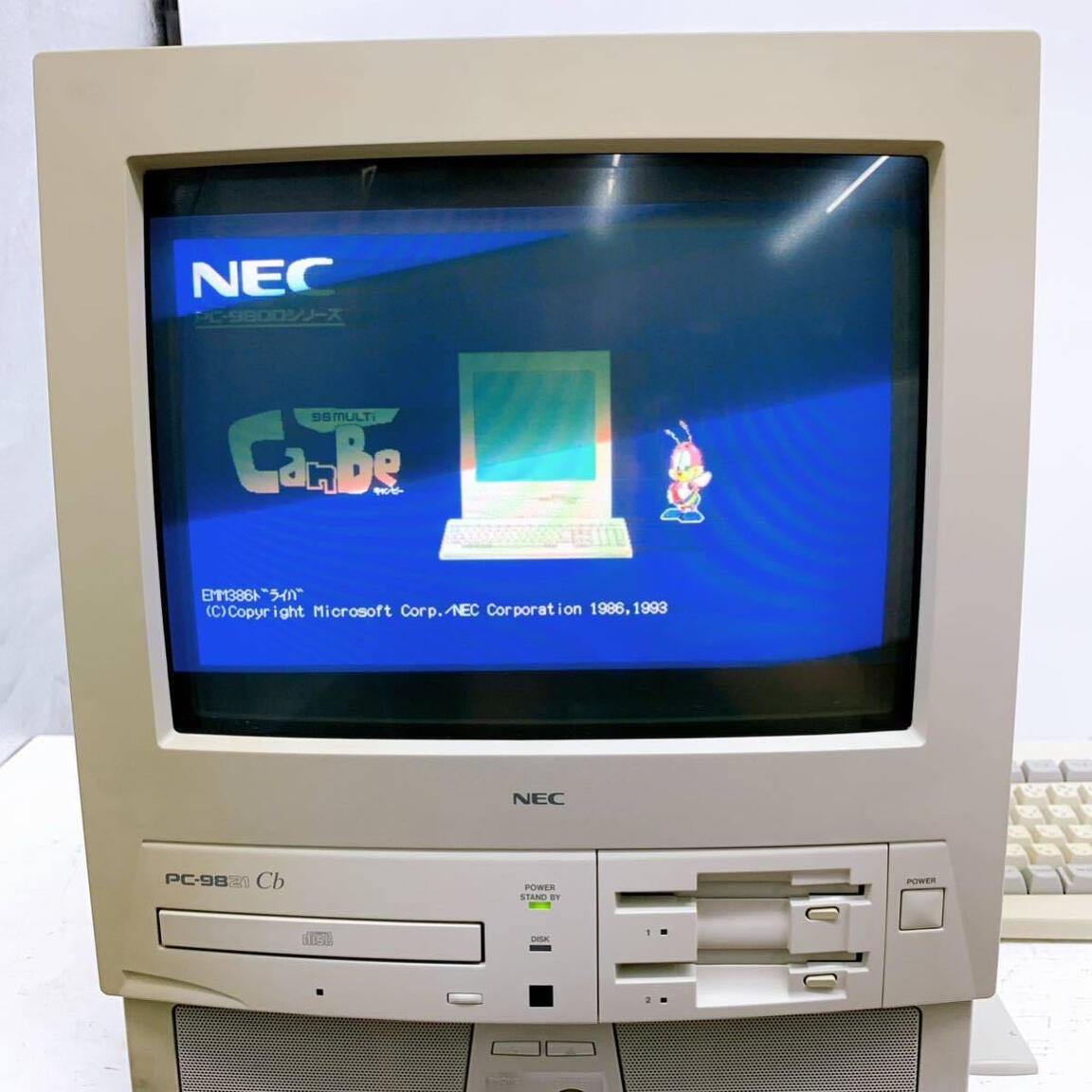
9821Cb
Alternatives: Cb2, Cb3, Cb10The familiar all-in-one CanBe, complete with its iconic, bee mascot-laden boot screen. A popular seller at the time for a number of reasons, built-in monitor and 86 compatible sound packed into the ideal form factor for small homes/apartments, to name a few of its positive qualities.Given its dual floppy option and gentler clock speed, I am partial to the original Cb. The latter three models in the series (given as alternates) however, are equally excellent machines if you can make use of that extra bit of power (all the way up to a 100MHz Pentium), with the Cb2 in particular (486DX2 @ 66MHz) quite possibly serving as an ideal Touhou experience off mere specs alone, and without much—if any—hardware fuss that comes with kitting out a standard desktop.
Best 9821

9821Ce, Ce2*
Alternatives: 9821Cs2, 9821Cx (NOT Cx2 or Cx3)It may not be as fast as an A-Mate out of the box, and diminuitive in comparison, but what the Ce loses in raw speed, it gains in supreme reliability, rarely requiring the tedious, full-on recaps of its higher end counterparts. The cherry on top? Built-in 86 compatible FM sound; no sound card needed.Do make sure to get a dual floppy model if you plan on using disks! It's nearly impossible to find the dual slot face plate on its own.* i509VCB mentions that the Ce2 seems to be less complained about.
Best 9801
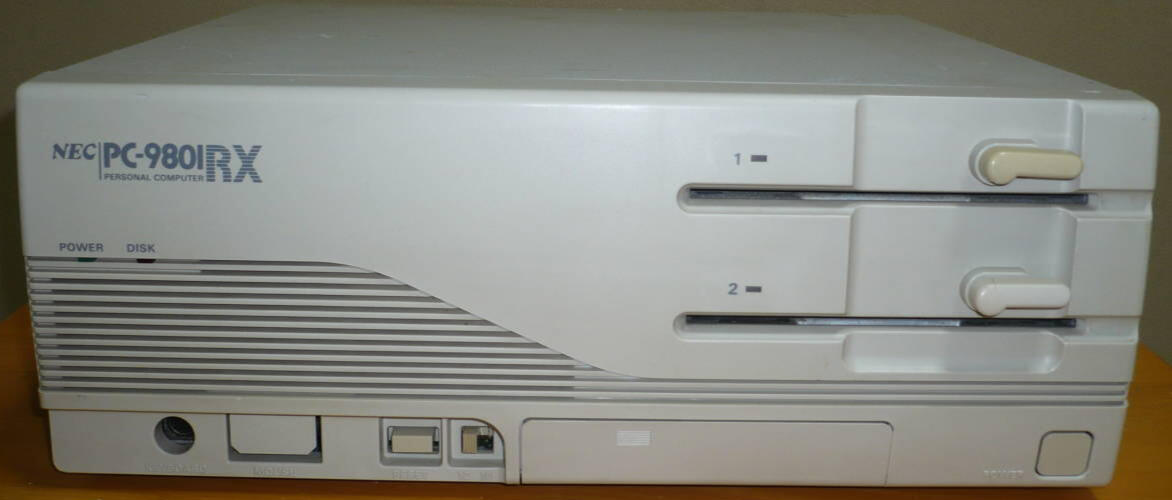
9801RX
Alternatives: 9801EX (3.5" counterpart), 9801VX, 9801UX, Epson PC-286 (similar or higher clocked models)Shameless plug unintended. Midrange sibling to the aforementioned 9801RA, this too maintains a v30 for legacy support, but instead, stays purely 16-bit with a 12MHz 286—the fastest in this processor class released by NEC, though Epson would strive for higher, eventually reaching a staggering 20MHz in 1990 (PC-286VX).It won't run the power-hungry titles within the PC-98 library (certainly not well, at least without the coveted IO Data 486SLC2 accelerator board), but for the remaining majority, you're more or less covered, and paired with a 9821, there's nothing you can't play, courtesy their positives when combined across two complementing systems.
With Caveats
A-Mates (Ae, Af, An, Ap, As): The premium range of 9821s. Commonly recommended some years back, and excellent machines... when they work, that is. Expect a full recap if you purchase one (and there are a lot of SMDs on these...)
Valuestars (9821V): Flexible when it comes to upgrades, though tower models do come at a premium, and being Pentium era, are a double-edged sword in regards to compatibility. Excellent if you'd like to run Windows era software and late DOS games, however.
98notes: For similar reasons. NEC's 98 compatible notebook line makes for wonderful, couch-ready companions, at the cost of requiring a great deal of servicing, rare and limited sound options if no built-in FM exists, and lack of floppy support without equally scarce docking stations and external drives that may or may not come with their own issues.
Ct, Cereb c200: No C-bus slots. Otherwise completely functional 9821s.
Not Recommended
9801 (no letter suffix), F, E, M, U, VF: these pre-EGC models do not feature the video modes used by the majority of PC-98 games.
DO, DO+: While a machine that supports both PC-88 and PC-98 software may be tempting, these are not particularly good at either, with only a single expansion slot unusable from the 8801 side, reported incompatibilities, no line out for the built in sound (headphone out is the best you get), and other limitations. A collector's novelty.
H98 (excluding H98S): Requires a custom video cable.
XA, HA, LT: Non-compatible portables.
Addendum:
On Sound (or Lack Thereof)
For machines without built-in FM sound, there are two major options:The earliest, and universally supported, is the PC-9801-26k, released in 1986, utilizing a Yamaha YM2203 OPN sound chip with six channels in mono. DO NOT CONFUSE THIS WITH THE EARLIER PC-9801-26. Not only is it missing a 'k' from the model number, it is only compatible with an 8086 or v30 equipped PC-98, making it useless in all but specific collector cases.These and its many clones by other manufacturers (often with quirky extras; my SNE Little Orchestra, for instance, has pseudo stereo out akin to a similar NES/Famicom mod, and slap delay/reverb effect through the front speaker and mono line out) are readily available, reliable, and inexpensive.
More prized is its successor, the YM2608 OPNA equipped PC-9801-86, a stereo option with significantly more channels available, and maintaining full support with its mono predecessor. Unfortunately, these too, suffer from the early 90s capacitor plague, and more or less require a full recap to be usable, at least for any meaningful length of time. Already increasingly valuable at around $100 USD, pre-serviced examples frequently sell for more than a staggering $300 in comparison. Clones of these exist, as well, but far fewer in selection, and no less rare.
Not Recommended
The NEC PC-9801-118. While it is similar to the PC-9801-86, and significantly cheaper, a number of its Windows-oriented hardware changes end in various incompatibilities with DOS software. While it is possible to manually patch games to make use of this card, unless it's your only option available (some late PC-98s come with the YMF297 chip built in), the effort isn't particularly justified, more so considering its lack of standard MSX controller ports.
A work in progress; check back soon!
A work in progress; check back soon!
Many of the websites referenced here are in Japanese, but translate well through Google and other services; don't be afraid to use them!
Hardware & MS-DOS
NEC PC-98 Basic Information Library Catalog
Debatably the most comprehensive source for understanding your PC-98, from the computer itself, to MS-DOS, and beyond.
Third Research Institute
The search feature on this site is definitely your friend. Numerous in-depth articles on various PC-9800 series models + their respective options and upgrades, SCSI C-Bus cards, and more.
Touhou old works on PC-9800
Not just an overview on everyone's favorite shrine maiden danmaku series and its NEC origins, but also contains an excellent database of sound card options for the PC-98, including jumper settings.
98JUNK.DOC
Large collection of jumper and dipswitch settings for various C-Bus cards.
Workshop Memories
Need to service your 98, and/or one of its many components? Chances are you'll find the perfect guide here.
Software
Vector: MS-DOS and General
Well-sorted and expansive selection of Japanese MS-DOS applications, drivers, and utilities. Most are archived with LHA; 7zip is recommended to decompress on modern machines.
refuge.tokyo: PC-9801 database
Documents many commercially-released games with 2-6 screenshots, alphabetically ordered by Romanized title within genre, or by publisher/studio.
(lou ghosty pointed out the bilingual support here that I embarrassingly overlooked even though it was right in front of me, courtesy the form of a clickable flag. Thank you! For everyone else's sake, and/or in case they are as oblivious as me, I have bypassed this and linked directly to the English version)
Archive.org: Neo Kobe NEC PC-9801 (2017-11-17)
To-date, the largest archive of commercial and doujin software for the PC-98; a must have if not dealing with original disks.
Archive.org: NEC PC-9801 Translation Archive
Perpetually updated, pre-patched images of every known English translated game.
Archive.org: Flux Dumps
Have a GreaseWeazle or Kryoflux, and want to make 1:1 disks? Prolific dumper Krugman maintains the largest archival quality collection currently available, individually uploaded by title. 👯
Emulation
PC-98 Emulation For Beginners
PC-98 Bot's definitive, full course guide to emulating 98 software; as perfect and straight-forward as it possibly gets.
Shopping
ZenMarket
Our most recommended proxy service—consistently reliable, with excellent packing skills, reasonable fees, and zero restrictions on adult items, a common blockade with most other alternatives.
Buyee
The official proxy for Yahoo! Auctions. While far too expensive and restrictive to actually recommend, its frontend remains the most convenient way to browse Y!A listings by category in English.
Surugaya
Online storefront for this popular Japanese used media chain, and pre-integrated into ZenMarket. Maintains a well-stocked PC-98 selection updated throughout the week (among other computers and consoles). Their kaitori (buying) prices make for a reasonable rough guess on current market value.
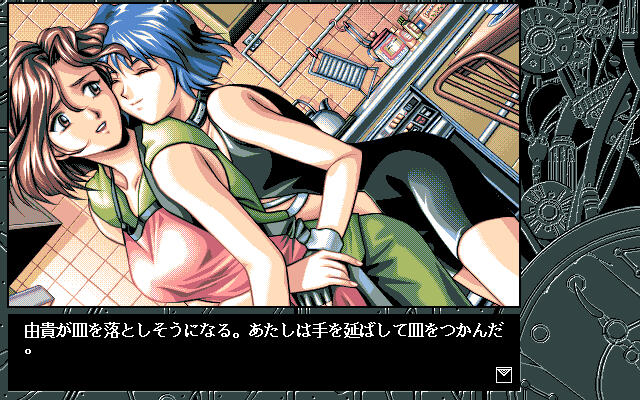
Fermion: Mirai kara no Houmonsha (Silky's, 1995)